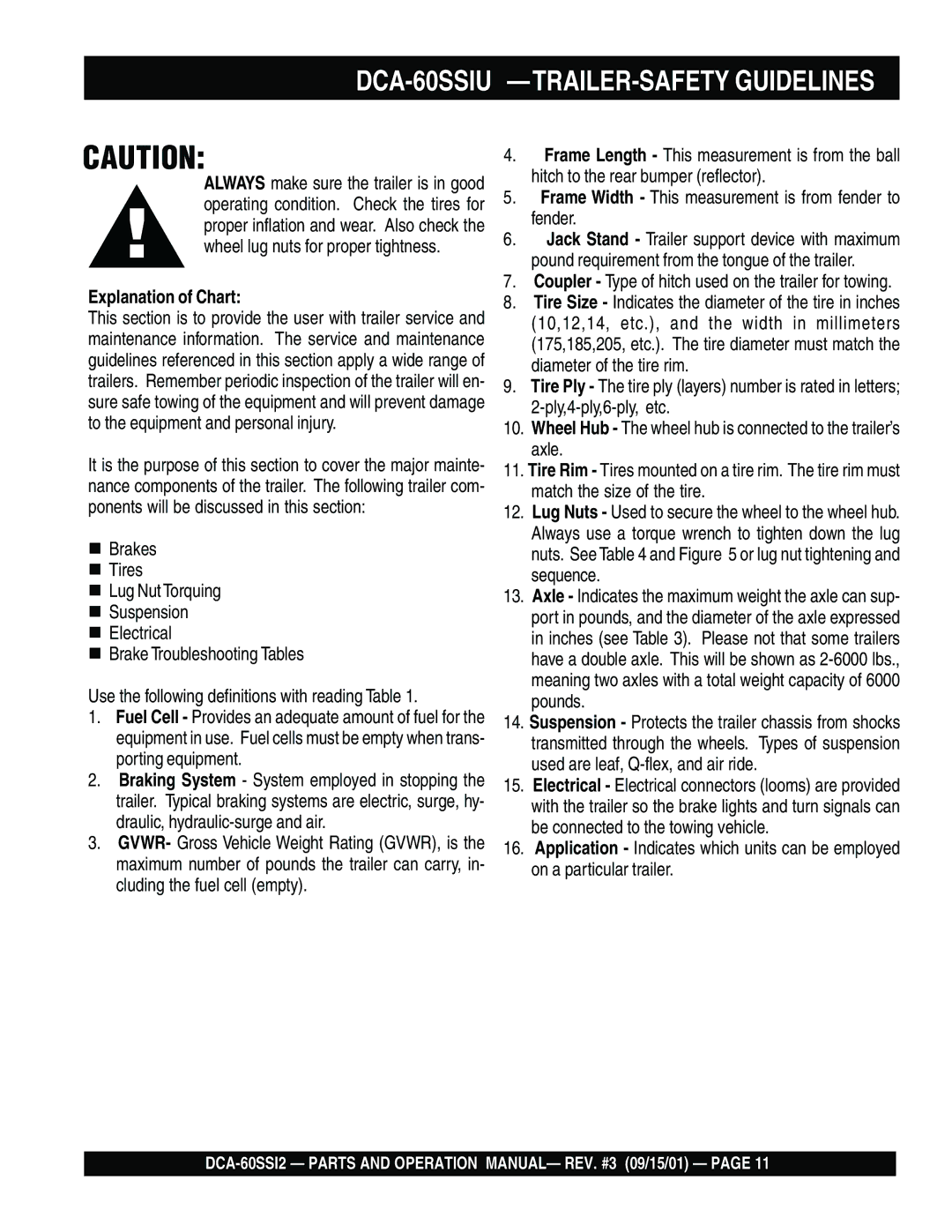
DCA-60SSIU —TRAILER-SAFETY GUIDELINES
CAUTION:
ALWAYS make sure the trailer is in good operating condition. Check the tires for proper inflation and wear. Also check the wheel lug nuts for proper tightness.
Explanation of Chart:
This section is to provide the user with trailer service and maintenance information. The service and maintenance guidelines referenced in this section apply a wide range of trailers. Remember periodic inspection of the trailer will en- sure safe towing of the equipment and will prevent damage to the equipment and personal injury.
It is the purpose of this section to cover the major mainte- nance components of the trailer. The following trailer com- ponents will be discussed in this section:
Brakes
Tires
Lug Nut Torquing
Suspension
Electrical
Brake Troubleshooting Tables
Use the following definitions with reading Table 1.
1.Fuel Cell - Provides an adequate amount of fuel for the equipment in use. Fuel cells must be empty when trans- porting equipment.
2.Braking System - System employed in stopping the trailer. Typical braking systems are electric, surge, hy- draulic,
3.GVWR- Gross Vehicle Weight Rating (GVWR), is the maximum number of pounds the trailer can carry, in- cluding the fuel cell (empty).
4.Frame Length - This measurement is from the ball hitch to the rear bumper (reflector).
5.Frame Width - This measurement is from fender to fender.
6.Jack Stand - Trailer support device with maximum pound requirement from the tongue of the trailer.
7.Coupler - Type of hitch used on the trailer for towing.
8.Tire Size - Indicates the diameter of the tire in inches (10,12,14, etc.), and the width in millimeters (175,185,205, etc.). The tire diameter must match the diameter of the tire rim.
9.Tire Ply - The tire ply (layers) number is rated in letters;
10.Wheel Hub - The wheel hub is connected to the trailer’s axle.
11.Tire Rim - Tires mounted on a tire rim. The tire rim must match the size of the tire.
12.Lug Nuts - Used to secure the wheel to the wheel hub. Always use a torque wrench to tighten down the lug nuts. See Table 4 and Figure 5 or lug nut tightening and sequence.
13.Axle - Indicates the maximum weight the axle can sup- port in pounds, and the diameter of the axle expressed in inches (see Table 3). Please not that some trailers have a double axle. This will be shown as
14.Suspension - Protects the trailer chassis from shocks transmitted through the wheels. Types of suspension used are leaf,
15.Electrical - Electrical connectors (looms) are provided with the trailer so the brake lights and turn signals can be connected to the towing vehicle.
16.Application - Indicates which units can be employed on a particular trailer.
